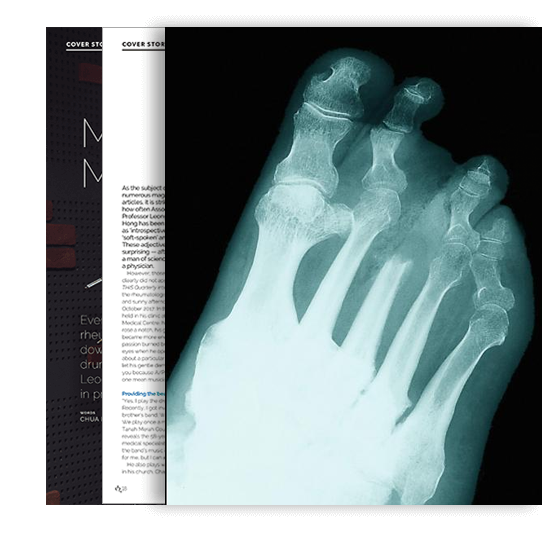A condition long known to be linked to lifestyle factors especially diet, gout is indeed precipitated by consumption of foods high in purines. These purines are metabolised by the body into uric acid which can crystallise into monosodium urate and get deposited within joints, tendons and surrounding soft tissues when at high levels. Essentially, gout is a disorder of purine metabolism. Although gout can affect both male and female patients, statistics show a higher prevalence in middle aged men. These patients tend to be overweight and may also have high blood pressure, diabetes and high cholesterol – a classic combination of disease conditions known to have strong links to lifestyle factors.
Gout, in itself, is a totally benign condition and is seldom life-threatening. However, the pain associated with the condition is usually unbearable and debilitating. If left untreated, the affected joints may become damaged and deformed, leading to a drastic drop in the patient’s quality of life. Other than the joints, the urate crystals may also accumulate within the skin and kidneys, leading to the formation of tophi and kidney stones respectively. These complications, although nothing sinister, can greatly affect the daily life and psychosocial health of the patient.
Besides lifestyle factors, there is a known genetic component to gout. The condition has been observed to run in families and several genes have been identified so far that are linked to an increased risk of hyperuricaemia (high serum uric acid level), which is the pathological basis of gout.
While genetics and family history are predisposing factors that cannot be changed, patients with a history of gout are advised to make certain modifications to their diet and lifestyle in order to prevent future attacks of the condition. Lifestyle modifications should be aimed at lowering the level of uric acid in the blood. Foods such as organ meats, shellfish, legumes and certain vegetables such as cauliflower and mushrooms are high in purines. Consumption of these food types can increase the serum uric acid level, leading to an episode of gout attack. Obesity is a known risk factor for gout so exercising regularly and losing weight may be a good idea to reduce one’s risk.
The key to medical treatment of gout is in keeping serum uric acid levels low. If a patient is able to adhere to a low-purines diet, medication may not be required. However, when there is poor control of the blood uric acid level, chances of repeated episodes of gout dramatically increase and oral medication will be recommended to bring the blood uric acid level down. In an acute flare, nonsteroidal anti-inflammatory drugs (NSAIDS) are usually given for symptomatic control. For patients in whom NSAIDS are less well-tolerated, colchicine may be given to reduce inflammation. As for prevention of attacks beyond dietary modification, allopurinol or febuxostat are the recommended drugs for the lowering of blood uric acid level. In some cases, probenecid may be prescribed to aid the excretion of uric acid through urine.
Although painful and highly unpleasant, gout is, in fact, a highly treatable condition. With good patient compliance to medical advice and suitable lifestyle modifications, the prognosis is usually very good. However, dietary indiscretion, surgery and infection can all lead to a recurrence in the form of an episodic flare. Overall, strict dietary modification, compliance to medical advice and maintenance of good general health are the key rules of thumb for the prevention of gout attacks.

